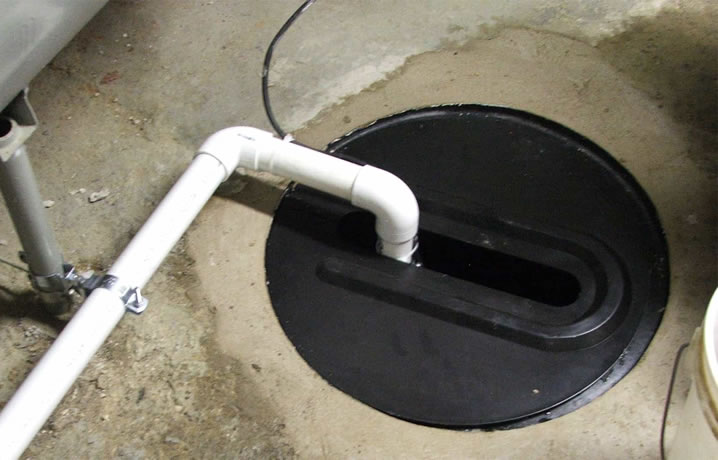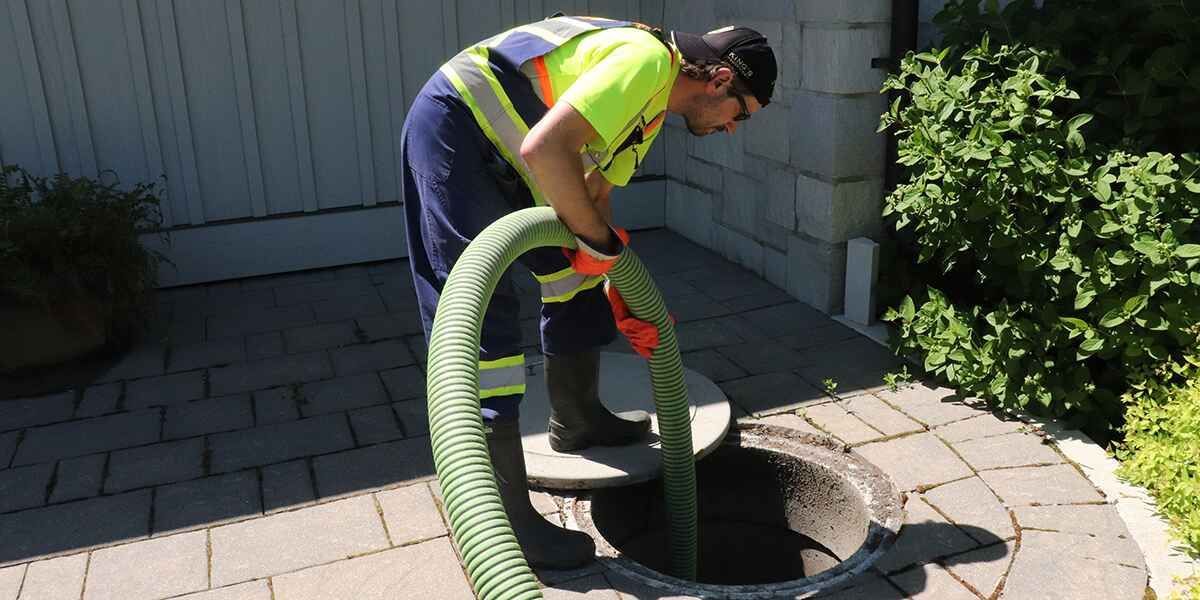Practical Tips for Taking Care of a Sump Pump
Practical Tips for Taking Care of a Sump Pump
Blog Article
The content directly below involving How To Effectively Clean A Sump Pump is definitely entertaining. You should read it.

Sump pumps are critical components in numerous homes, particularly in areas susceptible to flooding or excessive dampness. They help avoid water damages by successfully eliminating excess water from cellars or crawl spaces. Nonetheless, like any other home appliance, sump pumps need routine maintenance to ensure they operate properly when needed the most. Cleaning your sump pump is an important part of its maintenance, and recognizing just how to do it properly can save you from pricey fixings and possible disasters.
Intro
Preserving a clean sump pump is crucial for its correct functioning and long life. Ignoring this vital job can cause clogs, breakdowns, and ultimately, water damages to your building. Therefore, discovering exactly how to clean up a sump pump is essential for property owners that depend on these gadgets to maintain their cellars dry and protected.
Indications of a Dirty Sump Pump
Understanding when your sump pump requires cleaning is important for stopping possible malfunctions. Some typical indicators that show a filthy sump pump include unusual noises throughout procedure, lowered water circulation, and visible particles in the pit. If you notice any one of these signs, it's vital to clean your sump pump immediately to avoid any more issues.
Preparing for Cleansing
Prior to you begin cleaning your sump pump, it's important to take some security preventative measures. Beginning by shutting down the power to the pump to stay clear of any type of electric accidents. In addition, use proper safety equipment, such as handwear covers and safety glasses, to safeguard on your own from dust, particles, and potential pathogens.
Comprehending the Sump Pump
Prior to diving into the cleaning process, it's important to have a standard understanding of just how a sump pump functions. Typically installed in a pit or container below the cellar floor, a sump pump includes numerous crucial elements, including a pump, a float switch, and a discharge pipeline. When water gathers in the pit, the float switch triggers the pump, which then pumps the water out with the discharge pipe, far from the structure's structure.
Detailed Guide to Cleansing a Sump Pump
Shutting Off the Power
Begin by separating the power supply to the sump pump to prevent any kind of crashes while cleansing.
Looking For Appropriate Functioning
Before re-installing the pump, execute a fast examination to guarantee that the float switch turns on the pump appropriately. Put some water right into the sump pit and observe the pump's operation. If every little thing is operating properly, you can reconstruct the pump and reconnect the power supply.
Removing Particles and Dust
Make use of a bucket or an inside story to get rid of any kind of noticeable particles, dust, or debris from the sump pit. Dispose of the debris effectively to stop it from blocking the pump or the discharge pipeline.
Cleaning the Pump and Float Switch
As soon as the pit is clear of debris, very carefully remove the pump from the pit. Evaluate the pump and the float switch for any indicators of damages or wear. Use a soft brush or fabric to cleanse the surface areas and get rid of any collected gunk.
Flushing the System
After cleaning up the pump and float button, flush the sump pit with clean water to eliminate any staying dirt or sediment. This will certainly aid ensure that the pump runs smoothly and efficiently.
Upkeep Tips to Keep Your Sump Pump Clean
In addition to routine cleaning, there are several upkeep suggestions you can comply with to keep your sump pump in optimum condition:
Conclusion
Cleaning your sump pump is a crucial facet of its upkeep and ensures that it runs properly when you require it one of the most. By adhering to the actions detailed in this guide and integrating regular upkeep into your regimen, you can expand the lifespan of your sump pump and protect your home from water damages.
6 STEPS ON HOW TO CLEAN A SUMP PUMP PROPERLY
UNDERSTANDING SUMP PUMPS
Your sump pump plays a crucial role in protecting your home by managing and removing excess water. It primarily functions as a “shield”, guarding your basement against the damaging effects of water accumulation. The pump is housed in a sump pit in the lowest part of your basement, and its job is to pump out any water that collects there.
During heavy rainfalls or when snow melts rapidly, water can infiltrate your basement, posing potential risks like flooding, structural damage, and harmful mold growth. Here, the sump pump springs into action, pumping out the intruding water and directing it away from your home.
SAFETY FIRST
Before cleaning, remember to prioritize safety. Disconnect the sump pump from the power source to prevent any accidental electric shocks. Also, wear sturdy gloves to protect your hands from any sharp or dirty components within the pump.
REMOVE THE SUMP PUMP
After ensuring your safety, the next step is to remove the sump pump from its pit. Doing this might require careful maneuvering as you don’t want to damage any pump components. Once removed, clean the sump pit to remove any accumulated debris or sludge.
INSPECT THE PUMP
Inspect the pump for any visible signs of wear or damage. Check the power cord, float switch, and impeller housing. If any components look worn out or damaged, consider replacing them to ensure optimal performance.
CLEAN THE PUMP
Thoroughly clean the pump with warm, soapy water. Make sure to rid it of any dirt, gravel, or other debris that might impede its performance. You can use a toothbrush to clean the small, hard-to-reach parts of the pump.
REINSTALL THE SUMP PUMP
Reinstall the pump into the sump pit Make sure it’s positioned correctly to remove the water effectively Once it’s back in place, reconnect it to the power source TEST THE PUMP
Finally, pour some water into the pit to ensure the pump works correctly. It should start automatically and begin pumping out the water; if it doesn’t, check the power source and the positioning of the pump.
Remember, while cleaning your sump pump is an essential part of home maintenance, hiring a professional plumber for a thorough inspection and cleaning at least once a year is also important. This will ensure that your pump is in optimal condition, ready to protect your home from potential water damage.
BEST PRACTICES FOR CLEANING SUMP PUMP DISCHARGE PIPES
Regular Inspection: Regularly inspect your discharge pipes, especially during heavy rainfall or snowmelt periods. Look for any signs of blockage or damage. Early detection of problems can prevent serious issues down the line. Periodic Cleaning: Over time, sediment and debris can accumulate in the discharge pipes, impeding the flow of water. Regular cleaning helps keep the pipes clear and functioning efficiently. You can use a high-pressure water jet to effectively clean the pipes. Insulation During Winter: In colder climates, discharge pipes can freeze, blocking the outflow of water. Protect your discharge pipes from freezing temperatures by insulating them with foam pipe insulation. This will ensure the sump pump can continue to discharge water even in freezing conditions. Proper Positioning: The discharge pipe should be positioned to direct water away from your home’s foundation. Improper positioning can lead to water seeping back into the basement. Ensure the pipe is long enough and angled correctly. Installation of a Check Valve: A check valve prevents water from flowing back into your sump pit after the pump has pushed it out. Installing a check valve helps maintain the efficiency of your sump pump and reduces the risk of flooding. Minimize Pipe Turns: Every curve or turn in the discharge pipe can decrease the efficiency of water flow. By minimizing turns and bends in your discharge pipe, you can increase the efficiency of your sump pump. https://www.fullspeedplumbing.com/how-to-clean-a-sump-pump-properly9999/

As a passionate reader about How to Care for Your Sump Pump, I figured sharing that post was really useful. I beg you take the time to distribute this write-up if you enjoyed it. Many thanks for going through it.
Booking Page Report this page